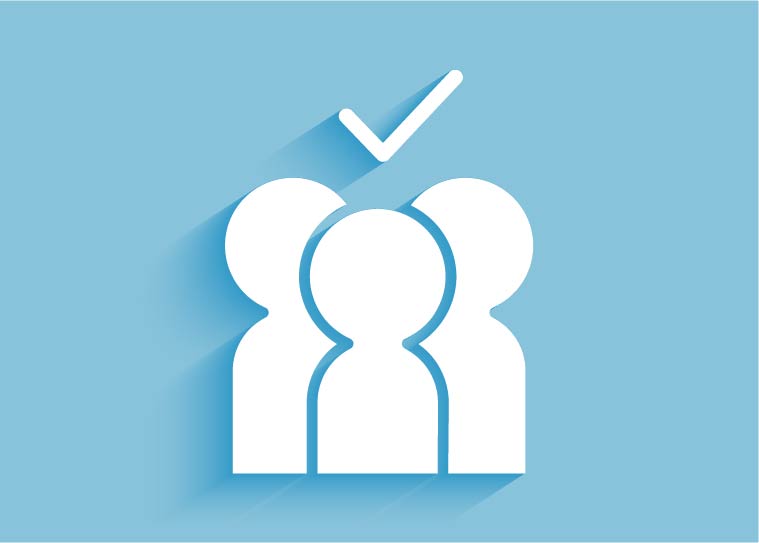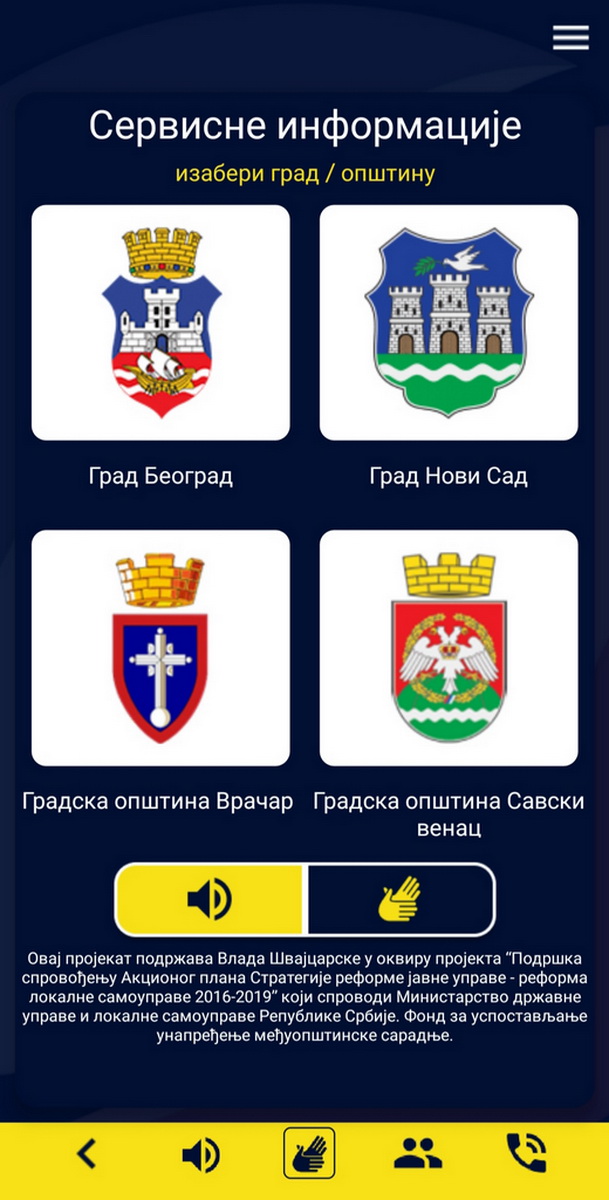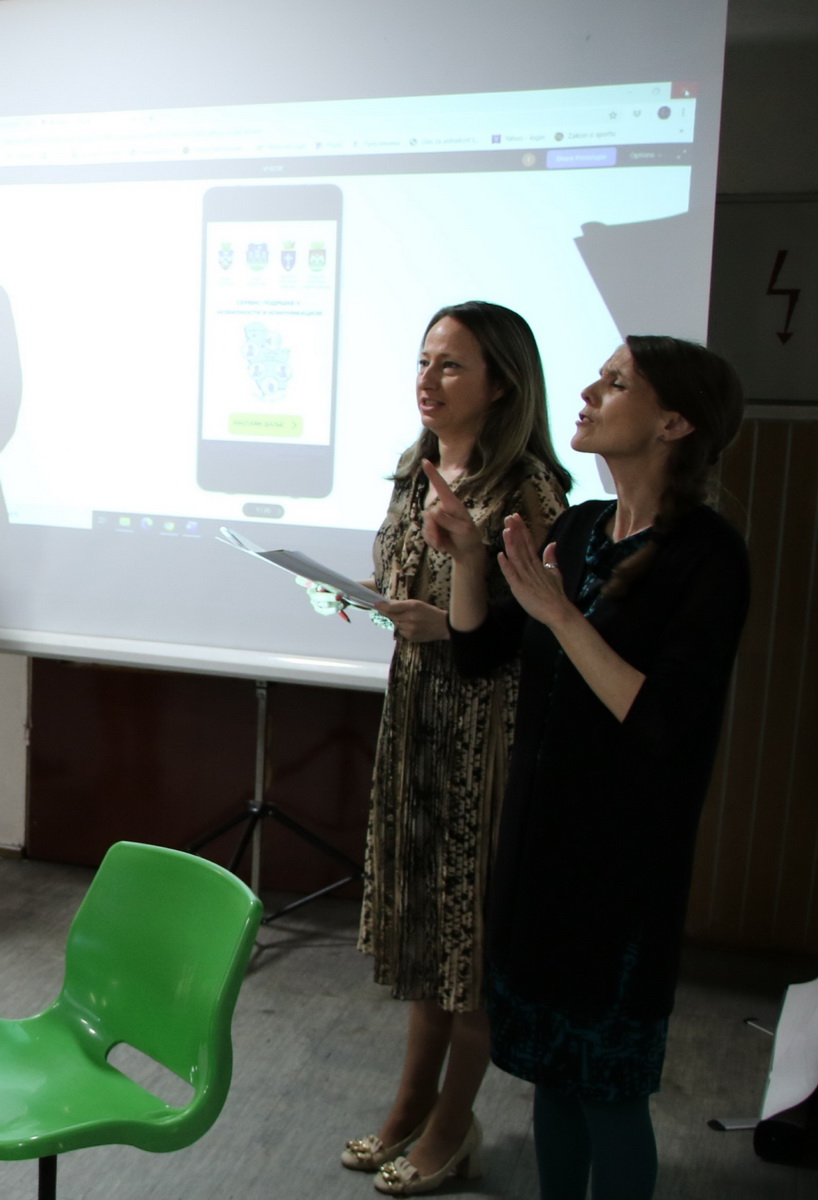 Information & Communication Accessibility as the Key to Social Inclusion
Information & Communication Accessibility as the Key to Social Inclusion
When deliberating on the inclusive society of the 21st century, some of the key issues to consider are accessibility and representation. Information accessibility is the reflection of the differences that exist among individuals and irrevocably influence the life experience of individuals and entire communities. When information accessibility is considered in the context of information & communication technologies (ICT), it becomes clear that the differences existing in the analogue sphere also affect the life experience of excluded people in the digital sphere, to an equal extent. If you think that these issues refer only to the vulnerable groups in our society, such as persons with disabilities or individuals whose socio-economic status puts them at the margins of information accessibility, think again. Remember the frustration you feel when you are trying to see the latest music video on YouTube, but instead a message pops up on the screen saying that the content is not available in your country. At that moment, you are a subject of digital inequality based only on your current location determined in the virtual space by your IP address. Now, think about the everyday feelings of your fellow citizens with disabilities who are constantly denied access to information on which their important life decisions, and even their quality of living, often depend.
 The removal of information and communication barriers as a response to this challenge entails the production of inclusive information presentation and dissemination formats, inclusive selection of information authors and producers, as well as the consideration of topics of relevance to all social groups, irrespective of their size and the degree of their marginalization in society. ICT, such as websites, applications, mobile devices, software, as well as the communication strategies at their core, are opportunities to make the inequalities from the offline world visible and to prevent them in the online sphere, i.e. to enable all communities to build their lives in the digital world in all its aspects, despite the hindrances. In this domain, the software industry features the technologies that enable access to and formulation of information for all people, including persons with physical and developmental disabilities.
The removal of information and communication barriers as a response to this challenge entails the production of inclusive information presentation and dissemination formats, inclusive selection of information authors and producers, as well as the consideration of topics of relevance to all social groups, irrespective of their size and the degree of their marginalization in society. ICT, such as websites, applications, mobile devices, software, as well as the communication strategies at their core, are opportunities to make the inequalities from the offline world visible and to prevent them in the online sphere, i.e. to enable all communities to build their lives in the digital world in all its aspects, despite the hindrances. In this domain, the software industry features the technologies that enable access to and formulation of information for all people, including persons with physical and developmental disabilities.
In Serbia, the Municipality of Vračar is the leader in the development of ICT products and services designed in line with the principles and mission of full information accessibility. The Service Centre info desk, as a one-stop shop where the citizens can find information about all important aspects of work, has been operational at the Municipal Administration for several years. At the info desk, persons with disabilities can receive information about social protection, free programmes and available training courses, and they can access information materials about the Municipality activities written in Braille. The content at the Municipality Administration’s website is continually adapted to all clients. Ms Irena Lakobrija, Coordinator at the Municipal Office for Persons with Disabilities founded in December 2019, says that their development processes are guided by the principle that man is at the centre of everything. Since August this year, the “Info za sve” application (Info for All) has been available at the Google Play Store, as the crown of municipal efforts to fulfil the information accessibility criteria. Besides the fact that persons with disabilities, as the application’s target audience, were involved in the entire production of the material, all its contents were also adapted for this target group. This approach is in line with the UNESCO recommendations on the development of information and communication technologies based on the principles of universal design and open access.
 The “Info za sve” application provides service information, such as on the scheduled water supply and electricity disruptions, changes in public transport regimes etc. The application settings enable the selection of the sign language as the default mode, while all audio and video contents are adapted to persons with disabilities. Within this initiative, which is aimed at enhancing the accessibility of information and services important for daily life of persons with impaired hearing or vision, our interviewee Irena says she takes the most pride in the assistance service that is available 24/7 to deaf people in need of urgent assistance. This approach is in line with the global standards in the area of information accessibility, as well as with the good practices, such as that of the American portal 360 Access, which generates information about accessible physical areas by taking into account the space characteristics and the reviews of visitors with disabilities who evaluate the services and propose possible improvements.
The “Info za sve” application provides service information, such as on the scheduled water supply and electricity disruptions, changes in public transport regimes etc. The application settings enable the selection of the sign language as the default mode, while all audio and video contents are adapted to persons with disabilities. Within this initiative, which is aimed at enhancing the accessibility of information and services important for daily life of persons with impaired hearing or vision, our interviewee Irena says she takes the most pride in the assistance service that is available 24/7 to deaf people in need of urgent assistance. This approach is in line with the global standards in the area of information accessibility, as well as with the good practices, such as that of the American portal 360 Access, which generates information about accessible physical areas by taking into account the space characteristics and the reviews of visitors with disabilities who evaluate the services and propose possible improvements.
The Municipality of Vračar takes a systemic approach to the enhancement of all forms of accessibility and designs its solutions based on the Accessibility Promotion Strategy and the associated Action Plan for Strategy implementation, which were prepared through a consultative process that involved a broad circle of stakeholders. The Accessibility Promotion Strategy, for which the Municipality of Vračar received the Award for Institutional Support to Accessibility Development, includes three sector areas: public structures, public areas and information & communication. Accordingly, the interventions that change people’s everyday lives cover a broad range of aspects and address the visible, physical barriers, as well as the invisible ones. The holistic approach to the changes includes the removal of architectural barriers, as well as the parallel development of the Guide to the Interactions with Persons with Disabilities, which has been distributed in primary schools, during public classes on the Serbian sign language.
In addition to being one of the cornerstones of democratic society, information accessibility also reflects the degree in which all its members participate in its functioning on equal terms. The accessibility of the basic information for life stands shoulder to shoulder with the cultural matrix comprised by various stories that constitute a community, city and society overall.
***
This article was written to commemorate the National Day of Giving, which is a part of the Framework For Giving project funded by the United States Agency for International Development (USAID) and implemented by the Coalition for Giving. The Coalition for Giving is led by the “Ana and Vlade Divac Foundation”, while the other Coalition members are the Trag Foundation, Catalyst Balkans, SMART Kolektiv, the Serbian Philanthropy Forum, the Responsible Business Forum and the Serbian Chamber of Commerce and Industry. The article was created at the initiative of and with the support from the Social Inclusion and Poverty Reduction Unit of the Government of the Republic of Serbia, as part of the “Support to Improve Social Inclusion in the Republic of Serbia” project, supported by the Government of Switzerland.
 Government of the Republic of Serbia
Government of the Republic of Serbia
















 pdf [271 KB]
pdf [271 KB]
Leave a Comment